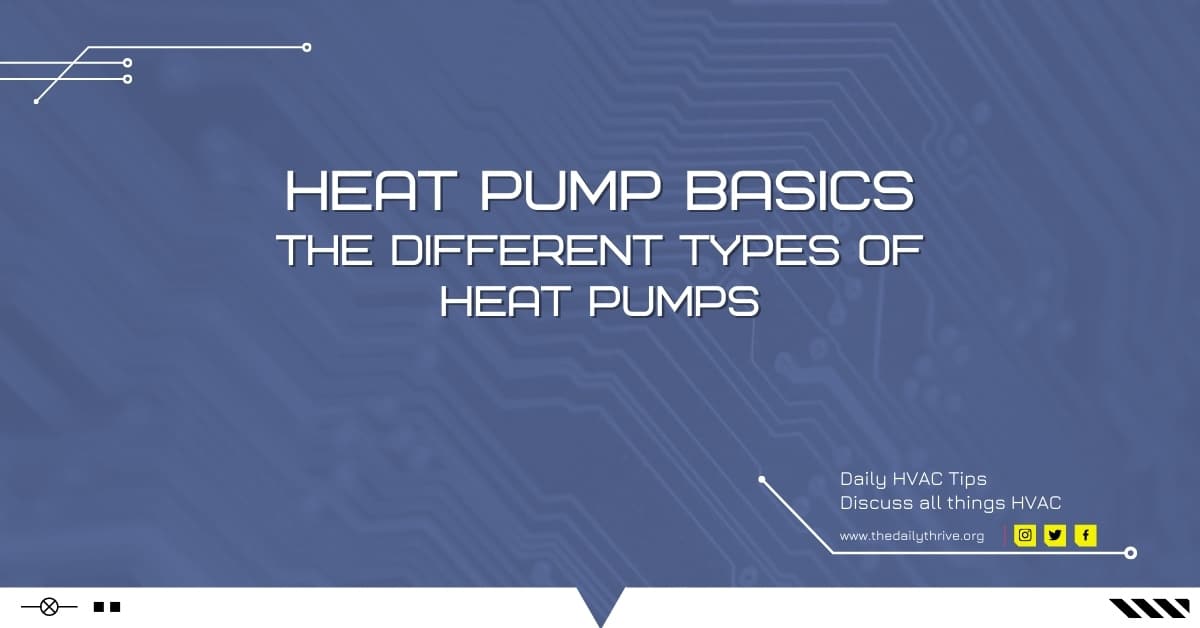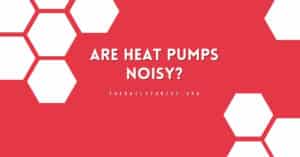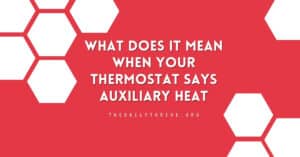A Heat Pump can provide an alternative to using your air conditioner. They offer an energy-efficient alternative to furnaces and air conditioners for climates with moderate heating and cooling needs. Like your refrigerator, heat pumps use electricity to move heat from a cool space to a warm space, making the cool space cooler and the warm space warmer.
During the heating season, heat pumps move heat from the cool outdoors into your warm house, and during the cooling season, heat pumps move heat from your cool house into the warm outdoors. Because they move heat rather than generate heat, the right heat pumps can provide equivalent space conditioning at as little as one-quarter of the cost of operating conventional heating or cooling appliances.
The Different Types of Heat Pumps
There are three types of heat pumps: air-to-air, water source, and geothermal. They collect heat from the air, water, or ground outside your home and concentrate it for use inside.
Sometimes you’ll see it written as air-water, water-water, water-air or air-air. The first word denotes the source. The second word indicates what it is being used to heat. So in the case of an air-water source heat pump, heat is extracted from the air which is heating a source of water. That could be a pool, a hot tub or a water tank.
Air Source Heat Pumps
The most common type of heat pump is the air-source heat pump, which transfers heat between your house and the outside air. Today’s heat pump can reduce your electricity use for heating by approximately 50% compared to electric resistance heating such as furnaces and baseboard heaters.
High-efficiency heat pumps also dehumidify better than standard central air conditioners, resulting in less energy usage and more cooling comfort in the summer months. Air-source heat pumps have been used for many years in nearly all parts of the United States, but until recently, they have not been used in areas that experienced extended periods of subfreezing temperatures.
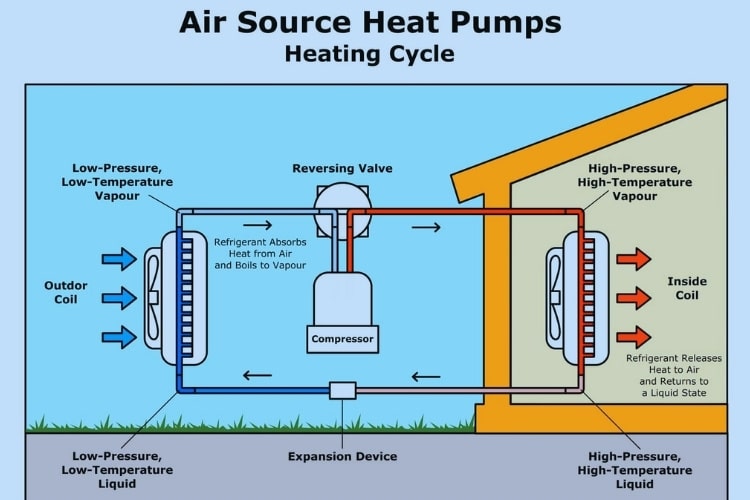
There are two types of air source heat pumps; air-air and air-water.
Air To Air Heat Pumps
The air-air heat pump is fairly basic. Heat is drawn from the outside air pushed through the refrigeration system, which heats the air in your air handler unit. This warm air is then distributed throughout the home usually via a central air system.
If you’re building a new home putting ductwork in is fairly painless. However, if you don’t have an existing central air unit, retrofitting your home to include one can be very expensive.
In a moderate climate an air source heat pump is an incredibly effective way to heat and cool a controlled environment. As technology has advanced we’re seeing air source heat pumps that can operate in temperatures as low -4 F (-20 C).
Mini Split Ductless Heat Pump Systems
Also called Ductless Heat Pumps, the Mini Split Heat Pump is an ideal choice for home requiring some add on heating, or in rooms where only a small space conditioning system is needed.
Read more: What size heat pump do I need
In the past if you didn’t have existing ductwork and you’re not looking at a new build a heat pump wouldn’t have even been considered. Installing a full system plus an entire forced air system in your home would be exceptionally expensive.
Duct work is something that needs to be well thought out when building a new home, adding bulky ductwork to an existing home usually presents a ton of challenges.
However, in recent years mini split systems have become more and more affordable making them a great option for homes not currently fitted with ductwork.
How Do Mini Split Systems Work?
A mini split system works similar to a standard heat pump. The main difference in how the two systems operate is the way in which the refrigerant is circulated.
In a heat pump the refrigerant is circulated from the compressor (the outdoor unit) to the air handler (the indoor unit). From their the air is pushed through the home using forced air.
With a mini split the refrigerant is run directly to the indoor units, which are installed in their respective rooms. Cooper tubing, filled with a refrigerant is run from room to room where the indoor wall units are mounted. Each room that contains a mini split will have it’s own temperature control which can be a huge perk of these types of systems.
In a mini split a condensate drain is required at each indoor unit to remove the excess moisture.
What are the benefits of using a Mini Split Heat Pump?
- The biggest advantage of the ductless heat pump system is that its size is considerably smaller than other heat pumps and you also have more freedom of choice when it comes to where you want the unit installed, as well as having the option of zoning (heating and cooling of different rooms).
- Compared to other Heat Pump Systems, the Mini Split units are much easier to install and maintenance.
- The fact that they have no ducts means that they avoid the issue of losing efficiency through ducts that forced air systems often face.
The downside of Mini Split Heat Pumps
- Mini Split Heat Pumps can be much more costly than other Heat Pumps.
- You must have a space where the outside unit can drain condensate unit.
- Mini Split Heat Pumps don’t have the same appeal as regular heat pumps and some consumers don’t like the look of the unit inside a room because it doesn’t have the same look as a built-in central system.
- A qualified Mini Split installer can be harder to find than an installer who does Air Source and Ground Source Heat Pump installations.
If you have a relatively small space to cool or heat, a mini split heat pump may be the best option for your home’s heating and cooling needs.
Air To Water Heat Pumps
An air to water heat pump is actually a little bit more diverse in what it can do. Just like an air to air heat pump it’s capable of heating or cooling a home. It’s also capable of heating the water used in your hot water tank.
There are two different types of air-water systems that can be installed in your home. The first option is under floor heating and the second system uses radiators to circulate heat.
Like installing ductwork through out an entire home, installing in-floor heating is a bit of process. It’s a lot easier and more cost efficient to install this type of system from the get-go. Alternatively, if you’re planning on ripping out your flooring that’s also a good time to consider under floor heat pump options.
The option is using hot water radiators to heat your home. Baseboard style radiators are a fairly common way to heat a home.
How Does An Air To Water Heat Pump Work?
The start of the process is the exact same for an air-air pump versus an air-water pump. Air is pulled over a coil, which is able to extract a portion of the heat.
This coil contains refrigerant which is compressed to further heat the liquid inside the coil. It is then zigzags through a water tank where the heat from the coil is absorbed by the water.
Of course this is an overly simplistic version of the process. With the advances in technology and clever design we’re able to direct heat directly into the wet heating system (radiators or in floor heating) or divert the hot water into the water tank for storage.
The reason air-water heat pumps are so effective in these particular applications is because they’re much more efficient at delivering heat at a lower temperature over a sustained period of time then a boiler unit.
Water Source Heat Pumps
There are two basic types of water source heat pump systems; open loop and closed loop. These types of heat pumps aren’t terribly common because most folks don’t have access to a body of water that would work.
Generally speaking, you’ll find water sourced pumps out in more remote locations and are a niche application.
Open Loop Water System
In an open loop application water is physically removed from the pond, lake, borehole, river or spring and pumped to the heat pump’s heat exchanger. The water is then discharged (at a lower temperature) back to the source.
Depending on where you live and how much you plan to circulate this may require a permit. It is also important to remember that you are going to incur an additional cost as a result of pumping a large amount of water through the system.
It’s also important to mention that if the temperature drop, the outlet can begin to freeze. Remember, we just extracted heat from the water and are now circulating it through our hoses at a colder temperature.
Closed Loop Water System
A closed loop system consists of pipes filled with a refrigerant that are placed in the body of water. The liquid in the pipes will draw heat from the water and circulate back to the heat pump.
Because you’re no longer just running water through the system you’ll need to ensure the lines are well out of the way of boats or other water traffic.
The upside of a closed loop system versus an open loop one is you no longer have to worry about freezing or corrosion. The downside is often times an open loop system is more efficient than a closed loop system.
Geothermal Heat Pumps
If we were able to store even a fraction of the solar energy that’s emitted every day we would be well on the way to solving one of the most taunting challenges of our time.
Geothermal does exactly that, it stores the suns energy. This means a few meters below the earth’s surface remains at a consistent temperature year round. Earlier I explained how energy constantly flows downhill. So heat, moves from a hotter environment to a cooler environment. And while air temperature and water temperature fluctuates with the seasons the earth’s temperature remains steady.
In the summer time we have an enormous heat sink and in the winter we have a reliant heat source to draw upon.
Of course there are complications – price namely – with geothermal heat pumps. The installation process requires the earth to be dug up that a closed loop of pipes containing liquid can be installed.
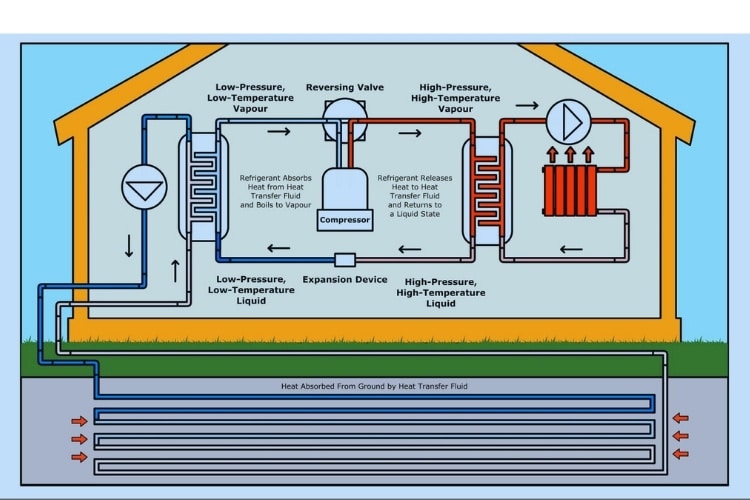
The distinct advantage that a geothermal has over an air source or a water source heat pump is temperature differential. If it’s below freezing, your geothermal system’s pipes are buried in an environment that is 60F or 15.5C.
If you were using a air source heat pump the temperature would be closer to 0F. In locations with extreme temperature fluctuations geothermal is the cleanest form of energy.
There several more complex applications but on a basic level a geothermal heat pump works as follows.
Tubing is buried approximately 12ft underground where the temperature is relatively stable. This tubing contains either air or antifreeze which is continuously running through the pipes. This fluid extracts the heat in the ground and delivers it to a heat exchange, which heats either air or water depending on the application.
If further heat is needed the system can include a compressor which will further heat the fluid in the pipes.
Because of the large upfront capital costs to bury the pipe, geothermal systems usually include fairly robust above ground systems.
So far we’ve covered, how a heat pump works (by transferring heat with the help of basic physics laws and a refrigerant). We’ve also discussed how heat pumps can be classified by their source whether that be air, earth or water.
We can further classify a heat pump into an electric or gas adsorption model. Electric pumps are by far the most common and if you have a heat pump installed at your home it’s probably of this variety.
How Does An Electrical Heat Pump Work?
Electricity runs a compressor, which compresses the refrigerant from a gas to a liquid. Increasing the pressure, by compressing the fluid, increases the temperature.
Now let’s assume we want to heat the air to warm a house. The warm fluid passes over the air releasing a portion of the heat. That air is now used to heat your home.
The refrigerant now continues on it’s way to an expansion unit. Remember how the refrigerant got hotter when we compressed it? The opposite happens when we expand it – it cools down.
This is a continuous cycle, and with the help of your thermostat allows us to maintain a comfortable 70 F.
How Does A Gas Absorption Heat Pump (GAHPs) Work?
A gas absorption heat pump is exactly that, a heat pump which runs on gas instead of electricity.
Because electricity is a much less efficient way to heat your home than gas, a gas heat pump’s efficiency doesn’t fall off as much when the air gets below freezing temperatures. They also have the ability to operate in much lower temperatures than a conventional electrical heat pump.
GAHP’s work in a very similar fashion to electrical heat pumps, the difference being the refrigeration cycle is run by burning gas. This offers the best of both a boiler unit and a conventional heat pump.
